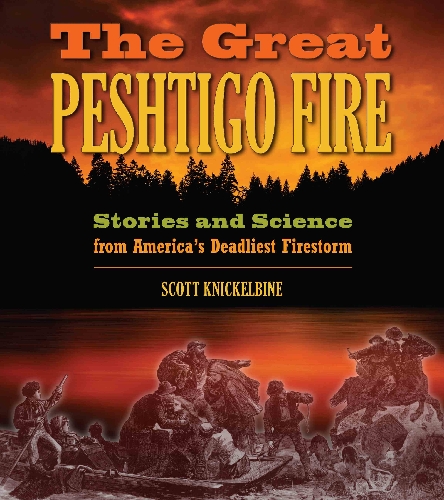‘The Great Peshtigo Fire’ is a good match for young historians

Don’t play with matches!
Even before you entered first grade, that was a lesson you learned from your parents, grandparents, teachers and neighbors. Matches were cool, but they burned hot, and not only could they destroy things with the fire they make, they could also hurt you very, very badly.
You know all about the things that fire can do – but did you know that it can cause a tornado? Read about that and one of the biggest disasters in history, in "The Great Peshtigo Fire" by Scott Knickelbine.
In 1871, America was still a young country, but it was growing very fast. People were coming from all over the world to live here, and they all needed homes and furniture. Because much of our country was covered with huge forests, wood was plentiful and cheap and was often used to make those things.
In Northern Wisconsin, logging was a big industry: thousands of people worked to cut down tens of thousands of trees every year to meet the immigrants’ demands. When loggers cut down the trees, they left behind dead branches and shrubs, which they called "slash." Dried slash was dangerous because it caught fire easily especially when mixed with the piles of sawdust that came from making wooden boards.
Trains, of course, were needed to bring the lumber out of the logging camps. The locomotives were run by steam, and the fire from the engines threw off sparks. It wasn’t unusual for one of those sparks to meet dry slash and cause a disaster.
On Sunday, Oct. 8, 1871, a disaster is exactly what happened.
It had been dry that summer, and people were already used to a lot of fires and smoke-filled air. At about 10 that night, everyone heard a soft roar that grew and grew.
"Suddenly, big sheets of flame blew out of the forest," says Knickelbine. Everyone ran toward the safety of the Peshtigo River, but the fire was faster.
When it was over, the town was little more than ash. Nobody knows exactly how many people died in the flames; Knickelbine says, " even today, we don’t know all their names."
So why isn’t this conflagration the first topic when it comes to firefighting? Your child will learn the reason in this well-written, well-illustrated book.
Those illustrations, in fact, are a big part of "The Great Peshtigo Fire." Yes, Knickelbine gives kids a thorough overview of life in the Upper Midwest, post-Civil War, and he explains how this disaster came to be, personalizing it a bit by including a young boy as part of the story. But Knickelbine also includes vast amounts of artwork, real photographs, and weather maps to fully explain the significance – and the horror – of the deadliest firestorm in American history.
Meant for kids 7 to 10, I also think an older child would get a lot out of this book. For young historians, future firefighters or kids with wide and varied interests, "The Great Peshtigo Fire" is a good match.